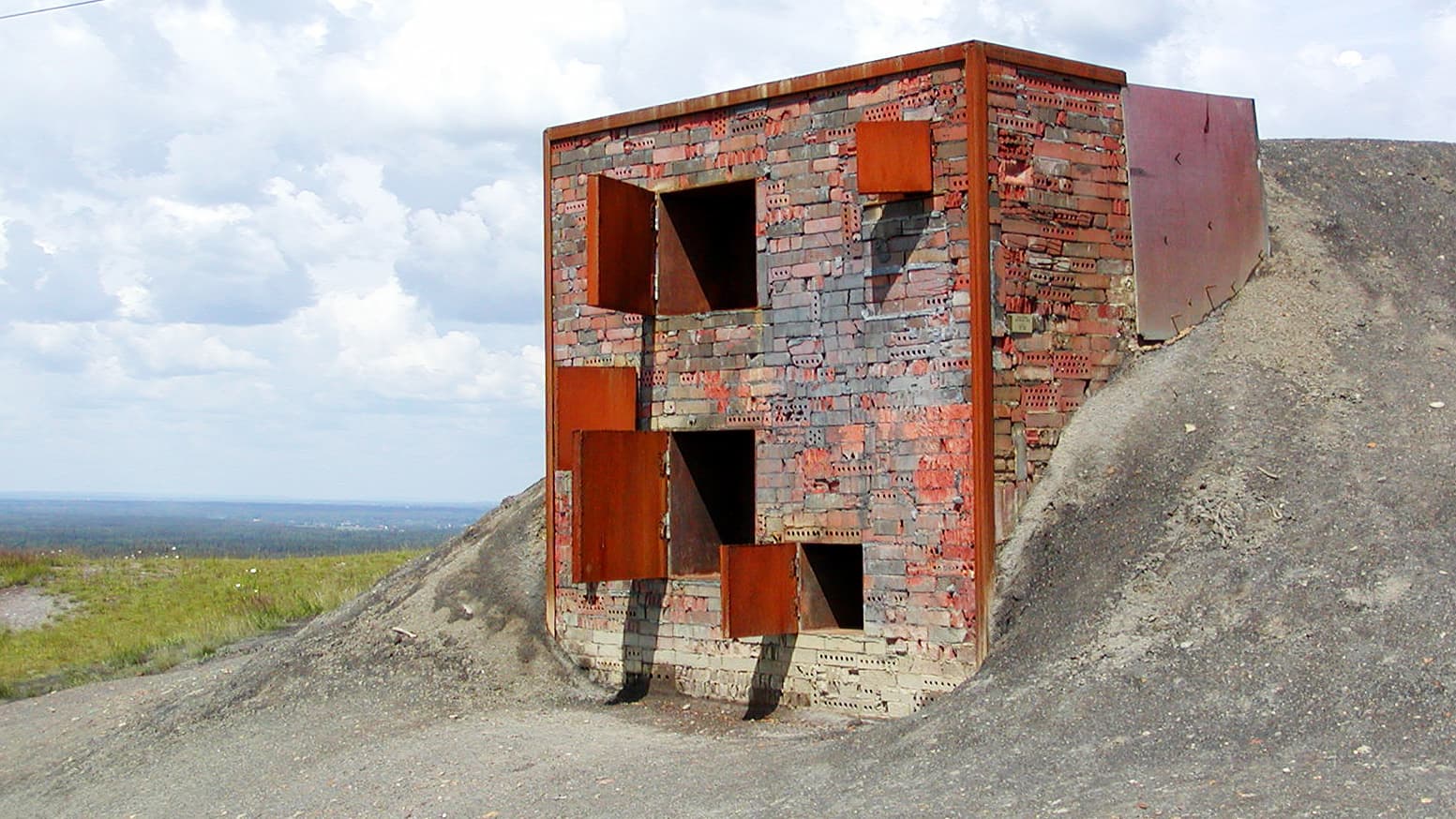28. Bunker
ARTIST: James Bates (2002)
TECHNIQUE: Reused bricks

Bunker is a work that evokes feelings. Some visitors associate directly to deserted military bunkers from wars or times of unrest. It might be a bunker from the borders between Germany and France. Others associate to cremation ovens in concentration camps. Often visitors experience anxiety or uneasiness when facing Bunker.
But the work may also evoke other thought, for instance how industrial society has developed into an information society. Then you can see the work as the last reconstruction of industrialism during the last decades of the 20th century. But it is also a work that radiates melancholy and forlornness.
The word bunker refers to refuge and is often used in a military context. Bunker is a dug-down position for the defence of an area. But there were also other bunkers built on hills, to get an overview. As a consequence, the placing of this work can more be seen as a coincidence.
James Bates was born in 1958 in Staffordshire, England. He is a British-Swedish painter and sculptor. He grew up in Birmingham and was trained at Liverpool College of Art, College of Art in London and the Royal College of Fine Arts in Stockholm. He lives in Örebro and is head teacher at Örebro School of Art. At Arlanda airport he has a work entitled Spiral Staircase and in Örebro you can find his Backdoor.
In Bunker Bates has reused bricks from torn-down buildings. The different colors, qualities as well as the sizes, give a slapdash and stitched-together impression. The power of expression of the bricks and its richness of variation contribute to a toughened feeling.
Bunker gives itself out to be something that it is not, both due to its lack of construction and the lack of function. Bates borrows from industrial buildings with clear limits and excluding walls. He plays on visual impressions that we all recognize.
This work was inspired by James Bates´ childhood. His father participated in the Normandy landing in 1944. There his father literally speaking met the characteristic bunker system of the Atlantic Wall. Later on his father worked as a truck driver and James used to accompany him on his tours. He would then peek out of the berth for sleeping seeing both old and new industries and housing areas. In these areas brick was the characteristic building material. These views made a deep impression on the young Bates.
Bates as a sculptor belongs to the latter part of modernism and to the irony of postmodernism. Bunker is not ironic, but penetrates instead history with its industrial melancholy and its nostalgia.
As mentioned before, Bates has another work of art named Backdoor in Örebro. It is a so-called twin-work to Bunker. Backdoor is placed along The Little River Walk in Örebro in case you want to experience that work as well. It ties on to industrial activities previously there. Backdoor was also done by reused bricks, randomly put together.
Sidinformation
- Senast uppdaterad:
- 20 september 2023
- Sidan publicerad av:
- Piia Edh
